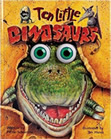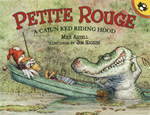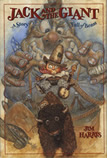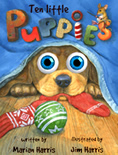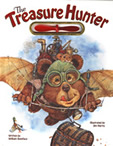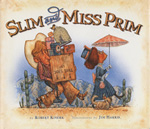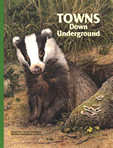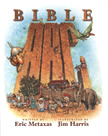Jim Harris Talks About Illustrating...

Three Little Cajun Pigs
If you and your brothers have been lying around watching TV and not taking out the trash…
And if you have an inkling your Mom may be getting fed up with the situation…
In fact, you suspect she may be about to send you out to make your own way in the world…
Let me recommend The Three Little Cajun Pigs as a source of important survival tips for someone in your situation.
The three little Cajun Pigs (named Trosclair, Thibodeaux and Boo) faced this very same situation and have valuable ideas to offer about…
-- building materials (straw is okay if you making dem bed, But when you build walls, you need somethin’ instead,)

-- detecting stranger-dangers (alligators in striped yellow jumpsuits are shown to be particularly untrustworthy,)

-- and even cooking tips for your first few days on your own (You gotta keep stirrin’ or roux’s gonna burn.”)

SPOILER ALERT: DO NOT READ THE NEXT PARAGRAPH IF YOU DO NOT WANT TO KNOW THE ENDING TO THE STORY OF THE THREE LITTLE PIGS (even the Cajun version.)
In the end… nobody eats the young piggies. (Surprised, aren’t you.)
However, Claude gets himself stuck in the chimney and when the piggies help him out, well… “de pigs had to laugh, ‘cause dat gator was toasted on his bottom half.”

There’s way more to the story… but I can’t tell you ALL of it!!!
What I thought I would tell you is a little bit about how I did the paintings for this book… and then, if you want you can use those ideas in your paintings.
First, take a look at this illustration…

There’s a bunch of stuff in this painting… TV, chair, pigs, painting, for-rent sign, window, hair curlers, basket, piggy trash… and the whole picture was in danger of looking like a huge jumble of junk.
So to the rescue came RHYTHM.
Huh? What is rhythm?
In art, rhythm is using the same element over and over to pull things together. Can you see what I used over and over? Two things: Piggy noses and dark blue rectangles.
See how there’s four red piggy noses clustered in the same little space on the paper? That’s rhythm. Bonk, BONK, Bonk, bonk. 4 piggy noses!
There’s also four blue rectangles: #1 is the TV. #2 and #3 are the painting and its frame. And #4 is the window trim.
Of course, you don’t have to always use four things to have rhythm… you might use three similar things, or SIX or TEN! But if you use rhythm in your art, you can get some amazing effects.
Adding Action with Diagonal Lines
Another way to make a painting come alive is to put in a diagonal line. Now, I don’t mean literally draw in diagonal line. (Although it has been done successfully.) What I mean is, arrange your objects to form a diagonal line. Look here…

From the little mouse on Trosclair’s tail right through Trosclair’s ears, to the top of the little tree and then up to the big tree there’s an imaginary diagonal line formed where the white sky runs into those colored objects. It’s not really “there;” your eye just imagines it by the way the bits are lined up.

A diagonal line always gives the feel of motion… which was what I needed to show Trosclair’s haste to get to Thibodeaux’s house.
Next time you want an “active” feel in your painting, think about sliding your objects around to make an imaginary diagonal line… and see if people don’t say WOW!

One more idea…
Making a Painting Look Peaceful
Sometimes you want a painting to look peaceful.
One way to do that is to use different colors, like green and pink and yellow and red, but make them all real dark or all real light (or all half-way in between). Artists call this “using similar values.”
Here’s Claude fishing from his inner tube while the unsuspecting piggies shoot a few hoops…

All is soooooo serene. Why? Because most of the colors are the same middle-value… the same “lightness.” The only exceptions are the inner tube and Thibodeaux (the dark piggy) which are VERY dark. Those two items are pretty small compared to the whole painting, and I put them in to add just a LITTLE excitement. Otherwise you wouldn’t even want to look at it, it would be so serene.
Well, I hope that gives you some ideas for your artwork.
I’m off to work on a painting myself!
Images and Text © 2009 Jim Harris. All Rights Reserved

